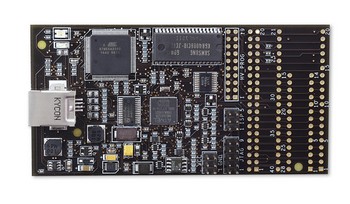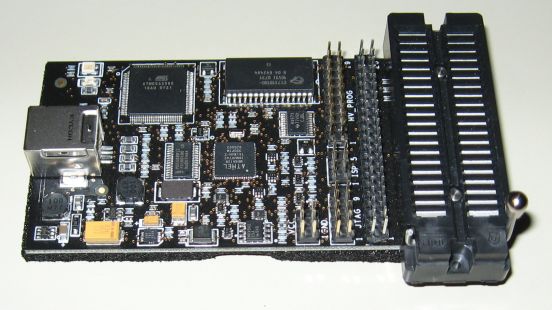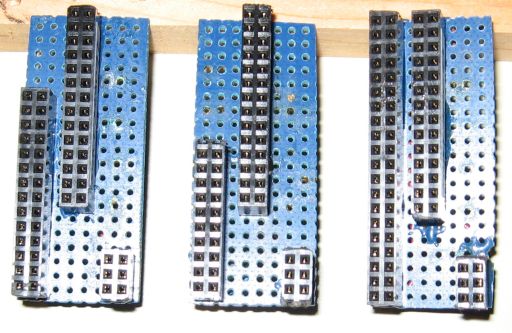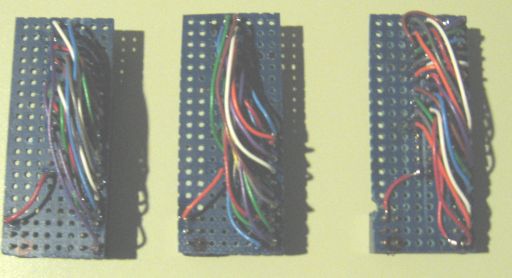
The AVR Dragon
The AVR Dragon is a great boon to hobbyists. AVR has provided an inexpensive programmer with many features found in much more expensive units. As of this writing, the Digikey price (p/n ATAVRDRAGON-ND) is around C$72.

However as with many low-end devices, what you get is "bare bones" and needs something more to be useable. When you first look at your Dragon, you wonder what the heck do I do with this? The following things are needed:
1. A 40 pin ZIF socket at the far right of the board, if you use DIP style AVRs.

2. Male headers in the HV PROG and what they call the Expand header.
3. Some means of jumpering the JTAG, ISP, HV PROG headers to the Expand header.
I should point out that I bought my Dragon mainly for the Parallel/HV Programming features. I already have an AVRISP2 which I use for daily in-circuit programming. The following applies only to this aspect of the Dragon. However once you get the hang of it, it isn't hard to figure out how to use the other features too.
If you haven't done so already, have a look at the AVR Dragon documentation here. Unfortunately a PDF version does not seem to be available.
The real problem with the AVR Dragon is setting up the connections for a particular device. In their documentation (Device Connection Sheets) there are 9 different "socket" configurations. Luckily I only use 3 for my favorite AVRs (SCKT3100A3, SCKT3200A2 and SCKT3700A1). First I made up a ribbon cable with a header for the HV_PROG socket at one end and 20 individual header sockets at the other. With this I can create any configuration I want, but setting it up is an irritating and time-consuming operation. After awhile I realized what I needed was three customized boards like this:


Building them was tedious but you only
have to do it once. Just follow the connection diagrams carefully and
be patient. Or you might prefer to make up a PCB. (I'm sure someone has already done this.)